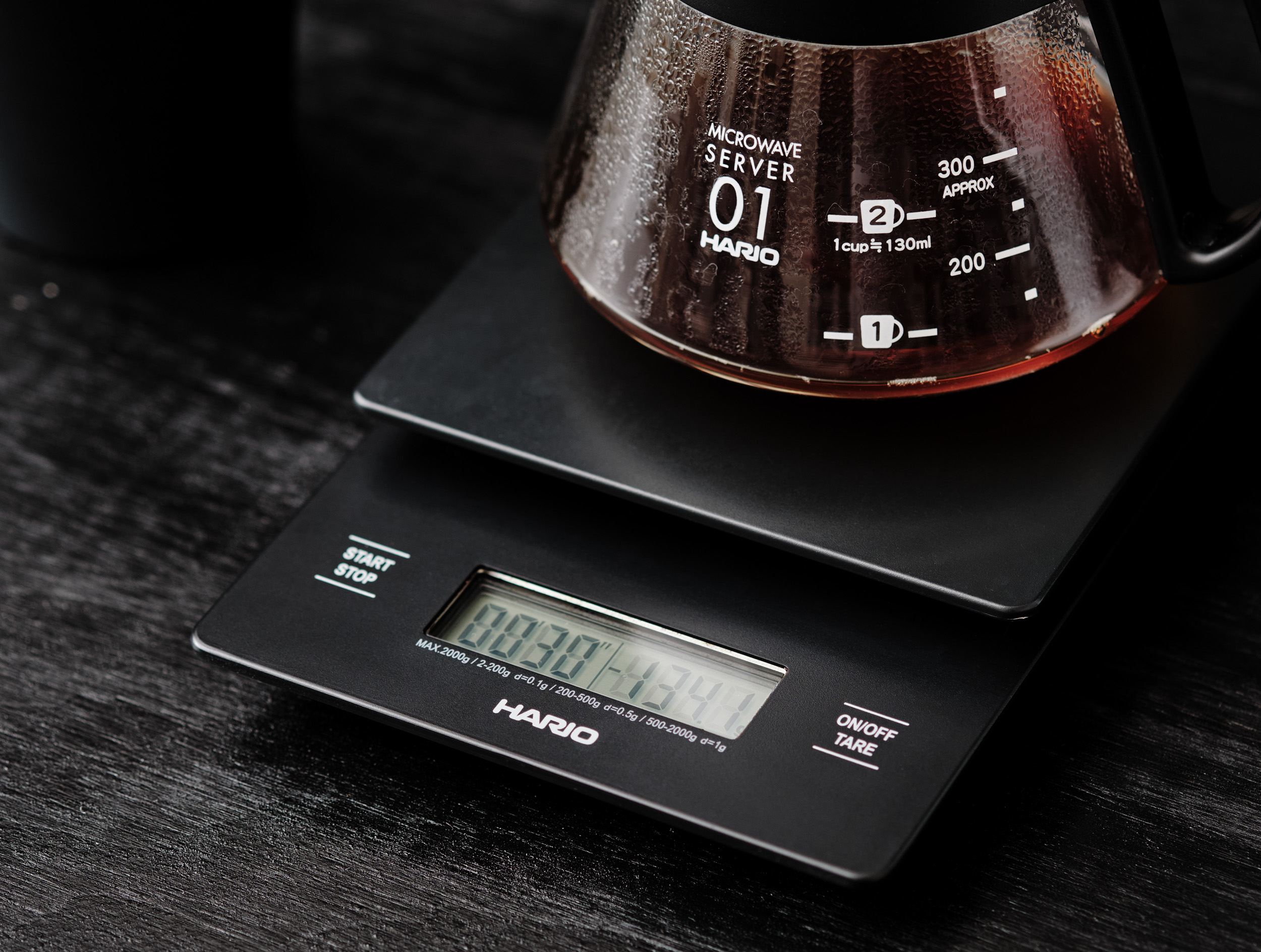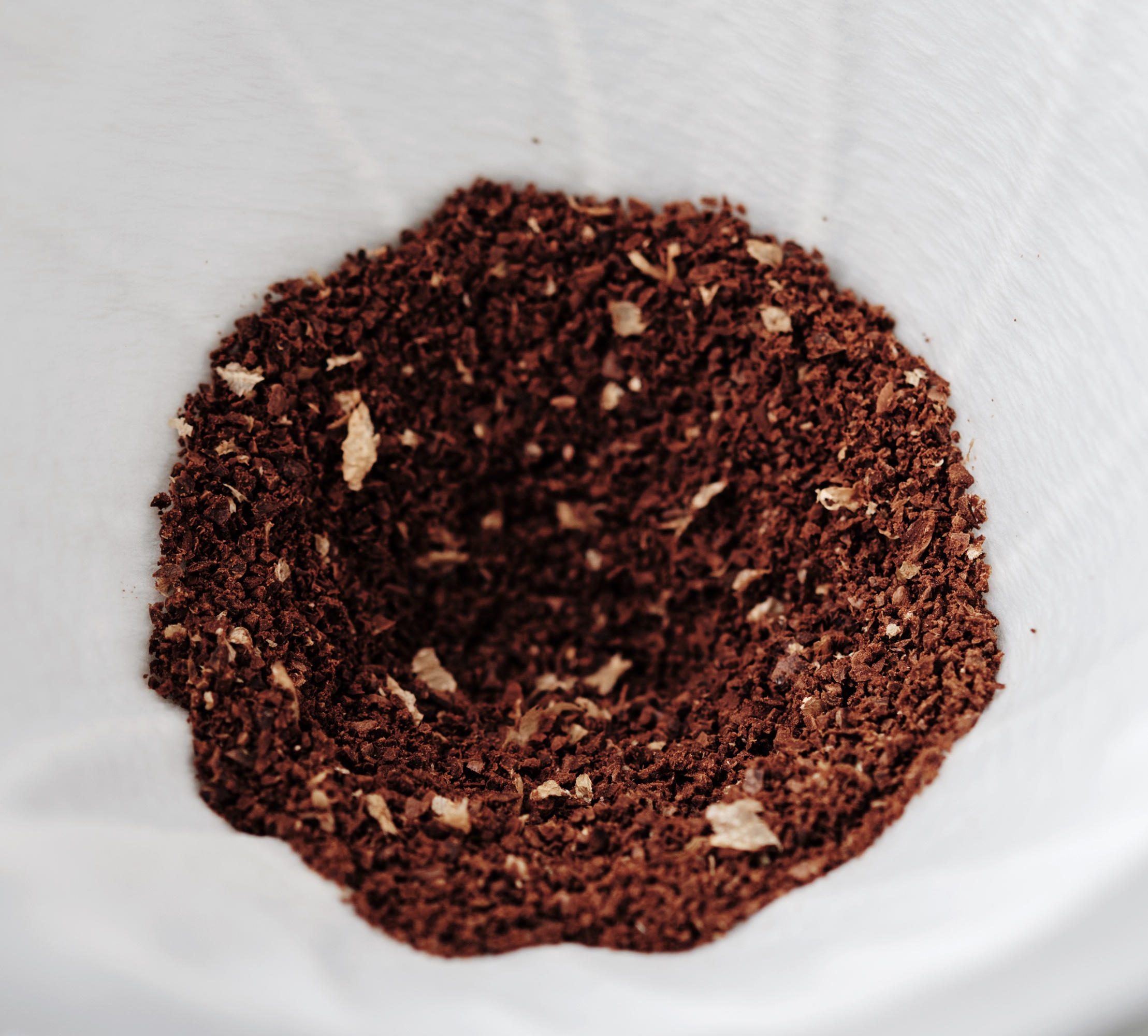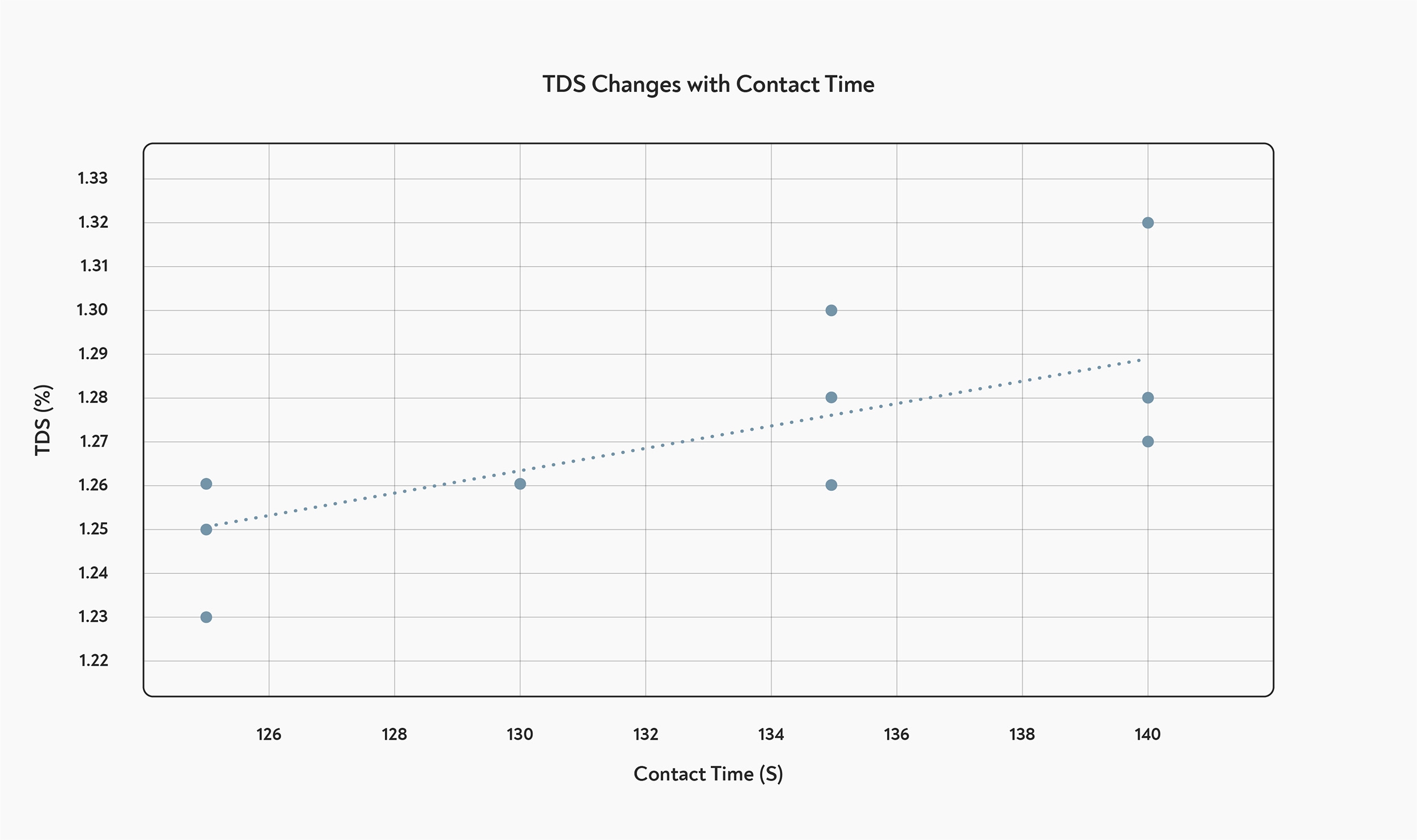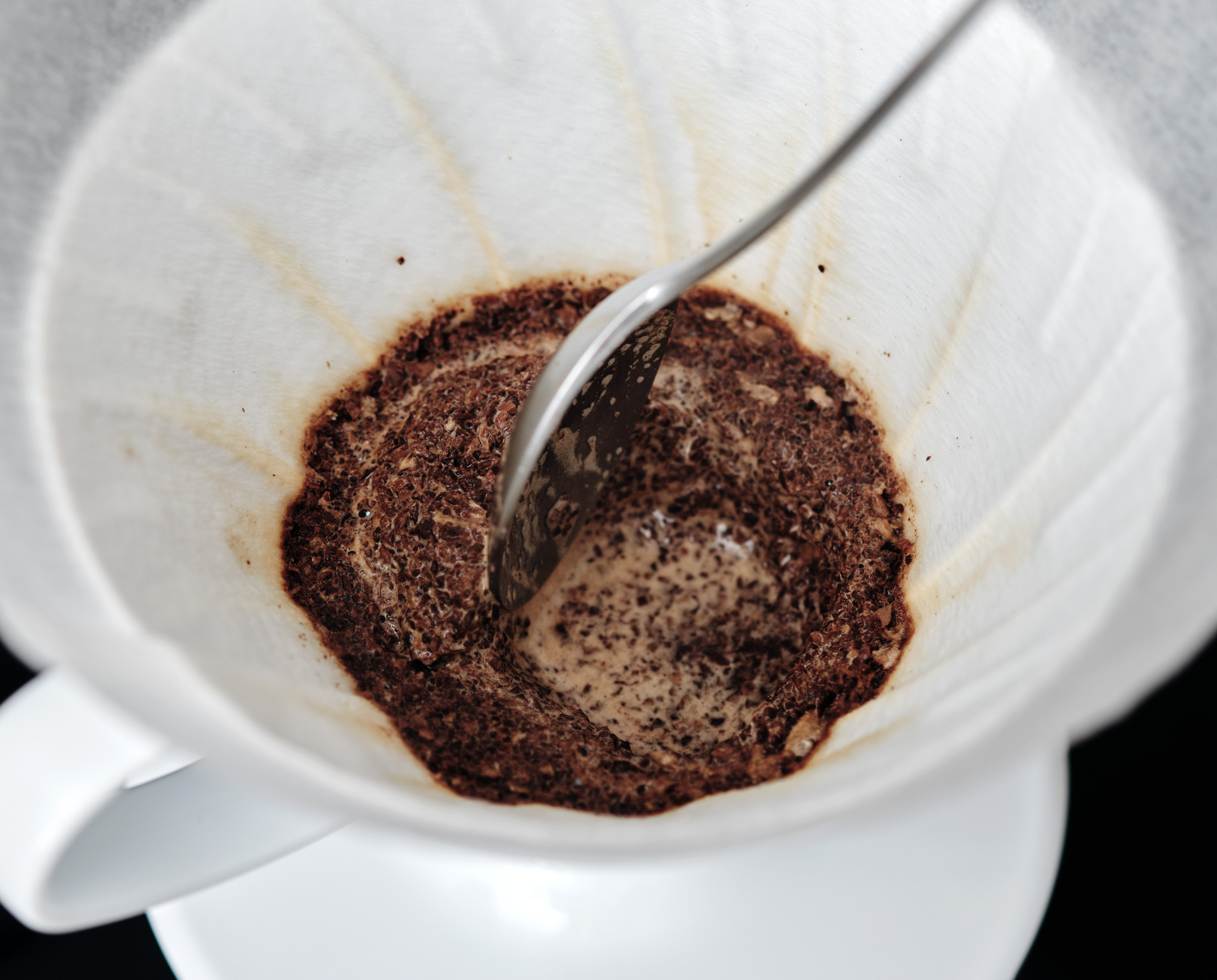Earlier this week, Swiss-based Australian, Matt Winton won the World Brewers Cup. Matt blended Coffea eugenioides and arabica. While his recipe was highly effective in the competition, his technique was different to most commonly accepted brew methods — and different to what we recommend at Barista Hustle. Of course, what works best in competition doesn’t always apply to other contexts — competitors often use methods which are arguably impractical in a cafe setting, such as sieving or regrinding. Moreover, the Brewers Cup allocates the majority of points to how a barista’s beverages taste and how nice their customer service is. But the fact remains, there were no Rao spins; no swirling; no tapping; no bird’s nests.
At BH, our philosophy is to constantly re-examine best-practices and check some of our assumptions. Recently, we’ve been investigating التفتح, in an attempt to understand which method works best, and why. We didn’t find any effect on extraction, but we did find that different methods affect the amount of water the coffee grounds absorb. To our surprise, stirring the bloom makes the coffee absorb less water during the bloom.
We assume that a method that allows more water to be absorbed during the bloom means it’s more effective at wetting the grounds, and therefore more likely to lead to consistent, high extractions. While stirring is certainly effective at breaking up clumps of dry coffee and ensuring it gets mixed with water, our results suggest that stirring does have limitations — at least in small filter brews.
Read on to find out the results of our experiment, and if you’d like to hear from the new World Champion himself, here’s a link to our recent interview with Matt Winton in the Percolation online course.
Why Agitate?
The purpose of التفتح is to make sure all the coffee grounds are evenly wetted and prevent dry clumps forming, and to release the roasting gases trapped within the grounds. Using too much water in the bloom can cause brews to clog, so it’s best to use just enough water to wet all the coffee — up to around three times the weight of coffee.
With such a small amount of water, it’s hard to pour in a way that wets all of the coffee equally, so most methods also include some kind of agitation (stirring or swirling) to make sure that the coffee and water are fully mixed together.
The ‘Bird’s Nest‘ method of التفتح. Creating a small depression in the coffee grounds is thought to help the bloom water permeate the coffee bed.
As well as — or instead of — agitating, another recommendation we make in the الترشيح online course is digging a small hole in the ground coffee before pouring the water in. This makes it easier for the water to reach the bottom of the coffee bed during the bloom, particular in V-shaped filter cones. We call this approach the “Bird’s Nest.” In previous tests, this method had been helpful in reducing bubbles from getting trapped at the bottom of the coffee bed during التفتح. But we’d never properly explored its effect, if any, on extraction.
التجربة
To understand the effects that stirring and the Bird’s Nest have on التفتح, we set up a simple experiment comparing the different methods. We brewed coffee in a V-shaped Kono brewer, using the same method each time, but just varying the التفتح method. We weighed the amount of water absorbed by the grounds during the bloom, and measured the extraction once the brew was complete.
 Weighing the bloom liquid by lifting the entire cone off the brewer allows us to determine how much water the grounds absorbed.
Weighing the bloom liquid by lifting the entire cone off the brewer allows us to determine how much water the grounds absorbed.
For each brew, we used a dose of 15 grams, and a ماء التخمير weight of 250 grams. We then poured on as close as possible to 50g for the bloom, before finishing the brew with a standardised two-pour method.
We prepared the bloom with one of four methods: A control with no spins or stirs (more or less like Matt Winton’s approach); stirring with a التحريك من الشمال إلى الجنوب، ومن الشرق إلى الغرب method (NSEW); creating a bird’s nest in the ground coffee; or combining stirring with the bird’s nest method. We repeated each method three times.
We found that whatever method is used during the bloom had little effect on the final TDS of the brew. The bird’s nest method had no significant effect on the amount of water absorbed during the bloom, or on the final brew time, suggesting that it doesn’t have much effect on the ability of water to saturate the grounds.
Stirring increased the total brew time by around 10 seconds, presumably because it causes الطحن الناعم to become lodged in the filter paper, blocking it slightly. Across all the brews, TDS increased slightly with brew time. Despite this, stirring barely increased the average TDS of the final brew.
While we expected to see an increase in brew time, the other effect of stirring was rather unexpected: it reduced the amount of water absorbed in the bloom.
A T-test showed the difference was statistically significant for the combined Bird’s Nest + NSEW method compared to the control, but not significant for NSEW alone compared to the control method (p=0.9). TDS was not significantly different to the control for any of the methods.
Given how unexpected this result was, we asked BH Coach Matthew Brown to replicate the experiment for us in his lab in Reno, Nevada. Like us, Matthew found that methods that included stirring reduced the amount of water absorbed, but again the difference was only statistically significant for the combined method, and not for stirring alone.
The bird’s nest method, on the other hand, significantly increased the amount of water absorbed. In Matthew’s experiment, the bird’s nest also increased the contact time in a similar way to stirring.
Across all the brews, the amount of water absorbed in the bloom had no discernible effect on the final TDS or contact time of the brew. If the amount of water absorbed does indicate a more even brew, the difference is not enough to show up as a difference in extraction.
Why Isn’t Stirring More Effective?
Our results support the idea that stirring is not effective in getting the coffee grounds fully wetted, which could explain why some baristas, including James Hoffmann و Scott Rao, report better results from swirling the bloom rather than stirring. It seems that the action of stirring the خليط القهوة somehow makes it easier for the water to bypass the coffee grounds during the bloom. Stirring opens up passages in the bed for the water to pass through, which may partially offset the advantage of mixing the water and dry coffee together. The difference isn’t enough to affect extraction, however — and the fact that the grounds absorbed less water overall doesn’t necessarily mean they were less evenly wetted.
Stirring the bloom. Stirring unexpectedly reduced the amount of water absorbed by the coffee during the bloom.
If you choose to stir your bloom, it might be beneficial to use more water in the bloom phase to offset the water passing through the bed more easily. Stirring will also be particularly suited to hybrid immersion/percolation methods such as the Switch, where the bloom water is held in the brewer during the bloom phase.
It’s also possible that this effect is particularly strong in a small brew like the ones in our experiment. With a deeper bed of ground coffee, it’s harder for water to penetrate all the way to the bottom of the bed, so stirring may be more effective in larger brews.
The bird’s nest method, in our experiments, also didn’t have a strong effect on the brew. It did increase the amount of water absorbed in Matthew’s experiments, however — so it may be that the way the bird’s nest is made determines how effective it is. The best method likely also depends on the particular combination of coffee and equipment — for example, the more الطحن الناعم your grounds contain, the more likely it is that any form of agitation will lead to clogging.
While these experiments don’t tell us what method is best for التفتح, they do point to a possible limitation to the stirring method. Data from hundreds of brews in a cafe setting suggest that swirling at the end of the brew raises the extraction ceiling. It’s possible that swirling in the bloom is also the most effective method for التفتح — but to be sure of it, we need a lot more data. To collect that data, we’ve created an online form for you to submit your own results: if you’d like to contribute, you can find the form and instructions for carrying out the experiment here.











I would like to contribute to the data collection for the experiment above but I didn’t exactly understand the pouring timings. So I noticed you instructed to pour 50g of water for the bloom phase and wait for 45″. Then pour the rest of the water in one pour and spin at 60″. So the second pour should be from 0:45-1:00? The remaining 200g should be poured in 15″?
Hi – sorry, I can see this isn’t clear! What’s intended is that you take the measurement of the weight at 45 seconds. That leaves you 15 seconds to replace the cone, note the weight, and pick up your kettle to begin the second pour at 60 seconds. You can then pour at your normal speed and spin when the pour is finished. Hope that clears things up! Tom